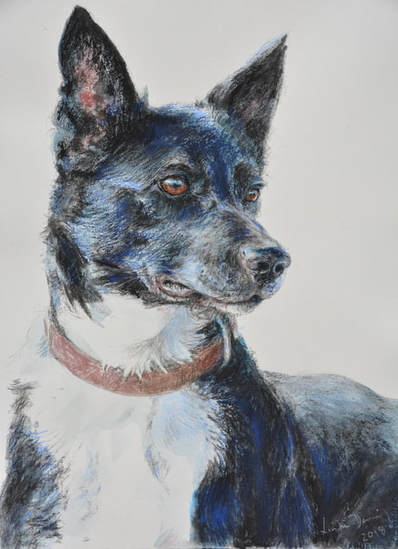Guide to the Trials

Guide to the Trials
Our objectives are to:
1.
Promote the welfare of sheep, dogs and humans.
2.
Promote wide human interest in all classes of sheep dogs and to secure proper appreciation and recognition of their place and use in human society and industry.
3.
Promote, in every way, the general improvement of the standard, breeding, working and exhibition of sheep dogs.
Protecting the welfare of all involved
We all understand that the welfare of sheep, dogs and humans is everyone’s responsibility, from the yards and the field to the spectator areas and Showground facilities. Two sections of ‘Regulations and Field Rules for the National Sheep Dog Trials’ apply directly:
- Section 11. If a dog should bite or in any way injure a sheep, such dog shall be disqualified and the competitor held responsible for any damage done to the sheep. Should a dog bark or snap at the sheep when they are stuck up, points may be deducted but the dog not be disqualified.
- Section 18. If, in the opinion of the Judge or Committee, any person ill-uses his dog, that person will be subject to a fine and may be debarred from competing again at any trials conducted under these Rules.
The Judge and/or the Committee will take appropriate action if anyone is found to be mistreating sheep, dogs or other human beings for the duration of the Nationals.
Understanding the Trials
The art of sheep dog trialling is for the dog, under the directions and control of the handler, to balance the three allotted sheep between FIGHT and FLIGHT ie. establish a relationship so that the sheep accept the dog as a controlling, but non-threatening presence.
A Handler’s aim is to establish this presence as early as possible, generally by applying and releasing pressure ie. the dog moves carefully towards the sheep and then moves away when the sheep respond. If successful then the sheep will accept the dog as a non-threatening control.
The reason this balance between FIGHT and FLIGHT is so important is because the major judging consideration is the relationship between where the sheep are as opposed to where they ought to be. At any given time there is a specific place that the sheep ought to be and if not then points will be deducted from the score.
Each competitor starts a trial with 15 minutes and 100 points. Points are deducted if the sheep are not where they ought to be or other misdemeanors.
If time expires before the course has been completed there is still a score available. Each obstacle has a value and these points are a further deduction to the score for the obstacles not completed. The RACE is worth 7 points, the BRIDGE is worth 8 points, the PEN is worth 10 points.
The Trial
Three randomly selected sheep are released from the far end of the ground, and positioned approximately 20m from the fence, not necessarily directly in front. When the judge is satisfied that the sheep are reasonably placed the trial starts and time commences.
The dog is then CAST, this is the initial runout and may be to the left or the right. When the dog reaches a Point of Balance, (a position from which the sheep can be lifted directly towards the handler) then the judge will draw an 8m corridor (in their mind) directly to the handler. To retain maximum points the sheep must remain within this corridor until the sheep are delivered into the D-shaped area that the handler is standing in. When the sheep have been delivered to this area then the handler is free to proceed with the course.
From this point the course is clearly marked. The left side is defined by a mown path that the handler walks along and the right boundary is marked by a line of bricks forming an 8m corridor. Again, to retain max points the sheep must remain within this corridor, not too far in front or behind the handler. The course takes a left hand turn at the first WINDING PEG. The sheep must pass this peg and also the second WINDING PEG on the right side ie. anti-clock wise.
At the RACE (as at all the remaining obstacles) the handler takes a marked position which is 3m from the edge of the obstacle, and must not move from this position, until all the sheep have cleared the end of the RACE.
The BRIDGE is next. With the handler in the marked position at the obstacle, all three sheep must clear the end of the bridge before proceeding to the last obstacle – the PEN. Here the handler must wait in a marked position ready to close the gate only when all three sheep are inside the PEN.

Sheep dog trial classes explained
Maiden (Novice) Trial: a section for dogs that have not won any maiden trial or novice trial.
Improver Trial: where dogs have won a maiden or novice trial.
Open Trial: dogs entered in the Open have won an improver trial. Dogs may be entered in both the improver and open classes at the same time.

Prizes and Trophies
The Nationals attract competitors from all over Australia. Apart from the satisfaction of winning Australia’s longest running trial, the following prestigious trophies and prizes are contested:
QUEEN’S TROPHY
For the winner of the National Open Championship. Portrait of the winning dog by Linda Dening
DUKE OF GLOUCESTER SASH (FRAMED REPLICA)
For the winner of the National Open Championship
GREG PRINCE WATCH
For the winner of the National Open Championship
CHAMPION OF CHAMPIONS PRIZE MONEY & SASH
A competition between last year’s National, current Supreme Australian, Commonwealth Champion and State Champions. Decided on the first round in the National Championships
LAWRIE TONG MEMORIAL PRIZE MONEY & SASH
For the dog scoring the highest points in the first round of the Improver Championship
GEORGE WESTCOTT PRIZE MONEY & SASH
For the dog scoring the highest points in the first round of the Maiden Championship
NATIONAL FIRST TIME PRIZE MONEY & SASH
For the highest points scored by a handler competing for the first time at the National Trial
MELLISSA GILLARD MEMORIAL SHIELD AND SASH
Awarded to the highest scoring competitor in the first round, working the dog that the competitor has bred and owns

Boco Raffa – portrait by Linda Dening.
Open Winner – National Sheep Dog Trial Championships 2018 – owned by John Perry

Duke of Gloucester Replica Sash
